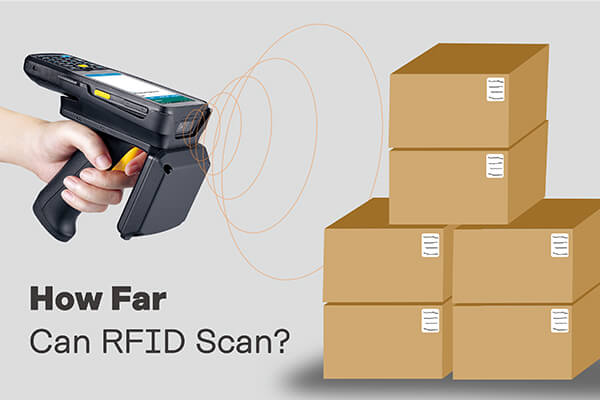RFID technology has an enormous variety of uses which ranges from public transportation to product tracking to animal identification. RFID tags in industrial environments are used to track assets useful for automation and logistics purposes. RFID systems can be broken down by the frequency band in which they operate and radio waves behave differently at each of these frequencies. This also affects the distance in which they can scan items. So, how far can each of these frequencies scan?
1. Ultra-High Frequency (UHF)
These tags have the longest read range and the fastest reading speed. Near-range UHF tags have a shorter and narrower read range making them less susceptible to interference which provides a performance advantage. With a passive RFID tag, far-range UHF RFID tags can read at ranges as far as 12 meters while active tags can achieve ranges of 100 meters or more. UHF tags are the most vulnerable to interference and their operating frequency ranges from 300 MHz to 3 GHz. To counteract signal interference in troublesome environments, UHF tag producers often manufacture readers and antennas that maintain reliability. UHF tags are cheaper to make than HF tags causing them to appear in a wide variety of applications including anti-theft management, wireless device configuration, and inventory management. As RFID technology grows, UHF tags are becoming increasingly popular due to their lower cost and equivalent effectiveness to LF and HF tags.
2. High Frequency (HF)
These tags are very common and they operate in a frequency range from 3 to 30 MHz. The read distance ranges from 10 centimeters to 1 meter. With moderate radio interference sensitivity, the majority of HF RFID devices function at 13.56 MHz. HF systems experience moderate sensitivity to interference. HF RFID is commonly used for payment, ticketing, and data transfer applications. Several uses of HF RFID involve NFC which focuses on data transfer between two devices mostly in smart payment cards. HF RFID tags come in many sizes and shapes to suit numerous purposes. They can accommodate read-only, write-only, and rewritable RFID tags. HF RFID tag readers can handle up to 20 HF tags at one time ranging memory capacity from 64 bytes to 8 KB.
3. Low Frequency (LF)
LF RFID has the shortest read distance of about 10 centimeters between the reader and the tag. These tags have the least amount of radio interference as the read time is also slower. LF band operates in a frequency range from 30 to 300 kHz. LF RFID systems operate at 125 kHz although some operate at 134 kHz. LF RFID is used in livestock tracking and access control. Due to different frequency and power levels, low frequency is not considered globally compatible.
Conclusion
Several factors influence the maximum distance you’ll achieve using the different RFID frequencies. These include; the antenna type, the operating frequency, characteristics of the RFID tag (size, shape), the environment of the RFID solution, the thickness, and material (adhesive, screw, tape, staple) to the RFID tag is attached to.
Nexqo is a professional RFID hardware provider with more than 10 years of experience in the RFID industry. Click here to learn how the RFID tag works.
You can also click here to learn more about the products that you can use in your project. If you are not sure, welcome to contact our sales experts any time.
.png)
